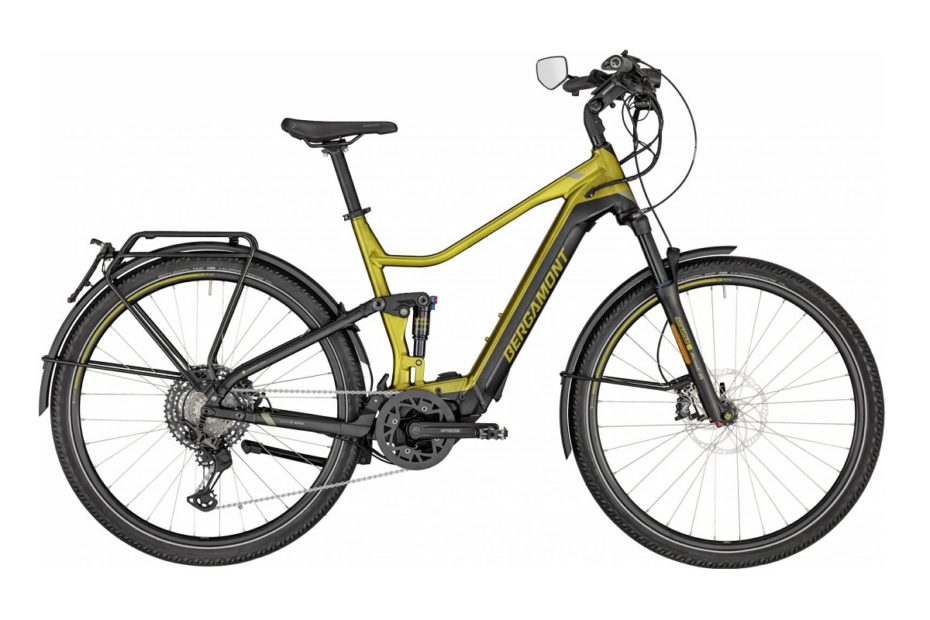Not all bikes are fitted for long distance bike tours. Here are some tips to fit yours and enjoy your trip.
- The best frames
- Unbreakable spokes, rims and hubs
- Robust & durable shifting
- Reliable brakes
- The right tires for the right path
- Ebikes tours
Frames: carbon frames should be of the highest quality
Carbon frames can, although seldom, break. Moreover, it’s practically impossible to repair them. That’s why, when it comes to a long journey, it’s preferable to rely on metallic frames, of titanium, aluminum or steel.
With a robust clamp like the one on the picture on the left, you can repair a metallic frame for many kilometers. You may want to take one with you on a long ride.
- Clamp
- Broken steel frame
Spokes and rims
Standard 2 mm spokes would do the job, even for long distances. Keep in mind that the more numerous the spokes, the more flexible your wheel. The standard number, 32 spokes is suited for long journeys too. With 36 spokes the wheel risks being too flexible and delicate, with less than 32, even all the way down to 20 spokes, could be too rigid, not comfortable enough to ride over bumpy roads. Fewer spokes could break more easily.

Broken rim
Rims should be of excellent quality, because, especially if you carry a heavy luggage, they can break, see photo on the right. Even if your bike is not cheap, sometimes manufacturers don’t mount rims that are reliable enough for long trips, especially with a heavy luggage. That’s because good quality rims are expensive. The same can be said for hubs, they’d better be of the highest quality in case of longer journeys.
Shifting
There are cassettes with 11 and even more speeds, and chain rings with up to four rings. Actually, the more numerous the speeds, the thinner the chain, because it must fit between the gears. A thin chain is more fragile, can more easily be affected by elongation and even break. So, if you plan to venture on a long biking journey, and your cassette has more than eight speeds, you’d better equip your bike with a high quality chain. In Europe and in the United States, it’s easy to find chains for gears with more than nine speeds, in many countries it can be very difficult to find one.
Brakes
Disc brakes and cantilever brakes are both quite efficient nowadays, just don’t forget to take with you a couple of pairs of pads, especially disc brakes wear them off rather quickly. The big difference is between hydraulic brakes and mechanical brakes, the former being more powerful, but very difficult to repair on the road, even dramatic if you venture outside Europe or the United States: you don’t want to be looking for a specific hydraulic brake liquid in certain countries. The latter are less performant, but so much easier to repair.
Tires

TPI
The more grip and comfort a bike tire can provide, the quicker it will wear off, so choose your tires according to the duration of your journey and the type of roads you want to ride on. How can we measure the durability of a tire? Tires are catalogued according to their number of threads per inch. That is, under the rubber each tire has got many metallic threads that reinforce it. The fewer the threads, the tougher and thicker the rubber must be, otherwise the tire would be damaged. The number of threads per inch can vary from 60 up to 170. Therefore, a tire with less than 100 threads per inch, or TPI, should have a hard rubber and be pretty durable.
A wise precaution is to check out the weight that the tire manufacturer suggests for each type of tire. This can considerably change, following the different tire TPI.
Ebikes tours
If you are to ride more than 100 km, two batteries are a must. In that case, switch battery once you have depleted 50% of the charge. This will avoid overheating, and once you plug again the half-depleted battery, you will have a surprise: having cooled down, it should have recovered a little bit of charge, roughly 5-10%.
Before your leave, you may want to be checking out your bike or ebike before leaving, check-list (ebike24.com)
Find more ebike tips here.




